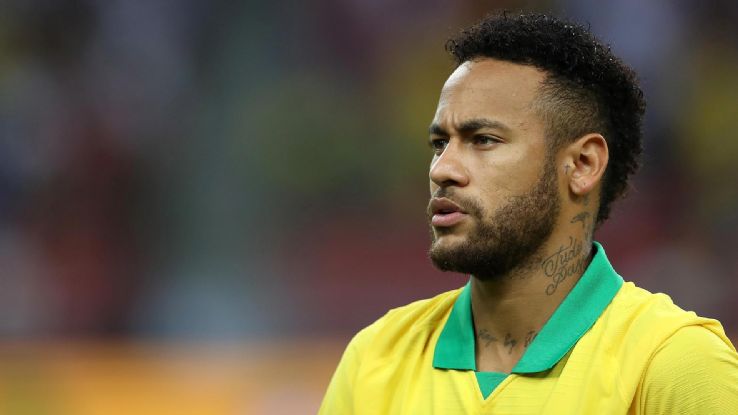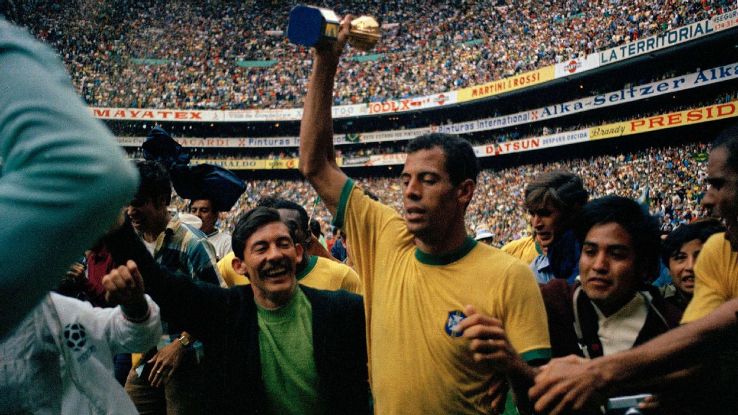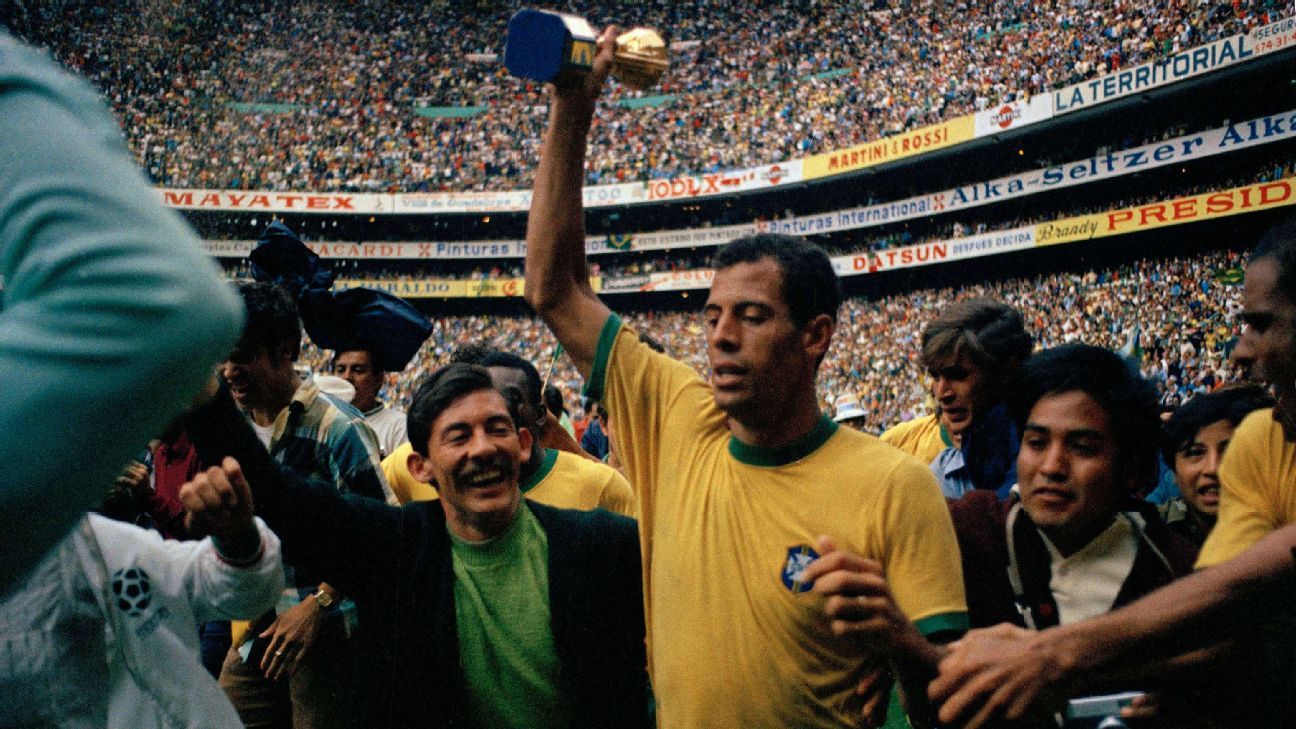Products You May Like




It is only natural, in the absence of football, that countries fill the time by going back and revisiting a happy space — sitting round the TV together to watch matches from a favoured World Cup.
But there is one commemoration, one trip back into the past, that would have been happening even if times were normal and football was ploughing ahead with its relentless full calendar.
This year marks the 50th anniversary of Brazil’s magical 1970 World Cup win.
– O’Hanlon: Just give Liverpool the title now
– Thompson: A letter from coronavirus quarantine
– Miller: What we miss about the Premier League
– Stream FC TV on ESPN+ Monday through Friday
For some, this was the greatest team of all time. It is debatable. Old timers in Brazil would point to the 1958 side, who won the country’s first World Cup, in Sweden. They remain the only Brazilian side to win in Europe, they played spectacular football and, on a man for man basis, they clearly look superior to the 1970 team. Giants of 1958 such as Garrincha, Nilton Santos and Gilmar would have walked into the side of 12 years later.
But this is not to detract from the magnificent exuberance of the 1970 side — which can count on a considerable advantage in its quest for immortality. That World Cup was the first one to be shown live on television in much of the world — and what images they were!
Playing in the fierce sun of the Mexican summer afternoon may not have been wise from a physiological point of view. But it gave the TV pictures an eerie exoticism. Many compared Brazil’s World Cup win with the first moon landing a few months earlier. Both events had an otherworldly feel which made them even more special.
And the commemoration is already underway. The 1970 World Cup ran from May 31 to June 21. But it was at the end of March that Brazil started to win it.
The coach during qualification was Joao Saldanha, a colourful figure with a background in journalism. He was a strange choice to coach the national team of a country that was under a far right military dictatorship: Saldanha was a communist.
But Joao Havelange did not become FIFA’s most influential president by chance. Back then he was head of the Brazilian FA, and he came up with a typically astute analysis of the situation. One of the reasons Brazil had flopped so badly in 1966 was they started with an excess of players: 44 in four different teams. This was the consequence of football developing quickly beyond the traditional heartlands of Rio de Janeiro and Sao Paulo. Porto Alegre and Belo Horizonte had emerged, and every region was pushing hard for its own players.
A strong man was needed, whatever his politics. Saldanha was appointed, and put an end to off-the-field intrigue. He immediately named his first XI plus his substitutes — and his team sailed through qualification in 1969.
But into 1970 his behavior was becoming increasingly erratic. He appeared to be drinking, he was waving a gun about, he fell out with Pele, and in March he was suddenly sacked.
A replacement had not been lined up. Dino Sani, from the 1958 side, turned the job down. Otto Gloria, who had coached Portugal in 1966, was in the frame. But the position ended up going to Mario Zagallo, just 38, who had played on the left wing in the World Cup winning sides of 1958 and 62.
On the field, Zagallo symbolized Brazil’s quest to balance attacking flair with defensive solidity. He was a talented winger, but he also funneled back to help out in midfield. He was years ahead of his time as a player and now he proved his value as a coach.
“I totally changed the team,” he said when I had the chance to go in depth with him some 15 years ago.
“I took over without a fixed idea — but I knew there would be a lot of changes because I didn’t accept the idea of 4-2-4, which Saldanha had been using.
“There is no way we could have won the World Cup playing that system.”
It might have worked in a weak qualifying group, but 4-2-4 would have left the team too open against the best opponents. Zagallo was not impressed with the team he inherited. He dropped centre-backs Joel and Fontana. One of them was replaced by Wilson Piazza, who had been playing as a defensive midfielder. Pushing him deeper opened up space for the excellent Clodoaldo to come into the midfield.

Another beneficiary of the coaching change was Rivelino, with his moustache and his rocket left foot. He had been on the bench, understudying playmaker Gerson. Space was found for him on the left side of midfield, as a kind of false left winger. As the tournament approached, the side gradually took shape.
The final piece in the jigsaw was striker Tostao, who had been recovering from an operation on a detached retina performed in Houston, Texas. During qualification, Tostao and Pele had operated as a fluid front two, taking in in turns to move forward or drop deep. Zagallo initially favoured a traditional target man centre-forward to operate a as a foil for Pele. But there was a problem: Pele was so good, so technically brilliant and mentally quick, that his strike partner would be shown up if he did not possess some of the same virtues.
With Tostao back and fit the parts clicked — he was not quick, but had plenty of skill and even more brain. And so Tostao became the centre-forward.
“He was the only one we left upfield,” Zagallo said. “We played in a block, compact. We brought the rest of the team behind the line of the ball. I’m happy to see the team in terms of a 4-5-1 formation.”
Even more specifically, they were pioneers of the modern day 4-2-3-1, with Clodoaldo and Gerson in the first line of midfield, behind Jairzinho, Pele and Rivelino.
The names trip off the tongue because they made magic together — and half a century later the spells they cast, superbly directed by Zagallo, can now be relived and appreciated once more.
